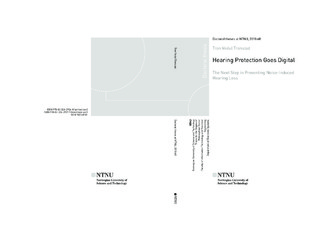| dc.description.abstract | Hearing loss is one of the most common occupational health issues in the world. Despite much focus on noise abatement and hearing conservation programs, still many workers suffer from noise-induced hearing loss (NIHL).
One of the challenges with many hearing conservation programs is that they are based on performing tests only once every three years, which means that a hearing loss might go undetected for long periods. Additionally, there is quite a large uncertainty in the standard hearing threshold measurement method, which leads to that a threshold shift of 15 dB is required for a conclusion that NIHL might be present. Together this leads to a very reactive hearing test regime, where large hearing threshold shifts must be present before any counteractions are initiated.
This thesis will present a new hearing monitoring regime, using much more frequent hearing measurements and statistical process control, that can detect small (<5 dB) hearing threshold shifts. A rapid automated hearing threshold measurement, implemented in a smart communication earplug, facilitates the frequent measurements. This new regime could be used to initiate individual counteractions that aim at preventing further negative developments. | nb_NO |
